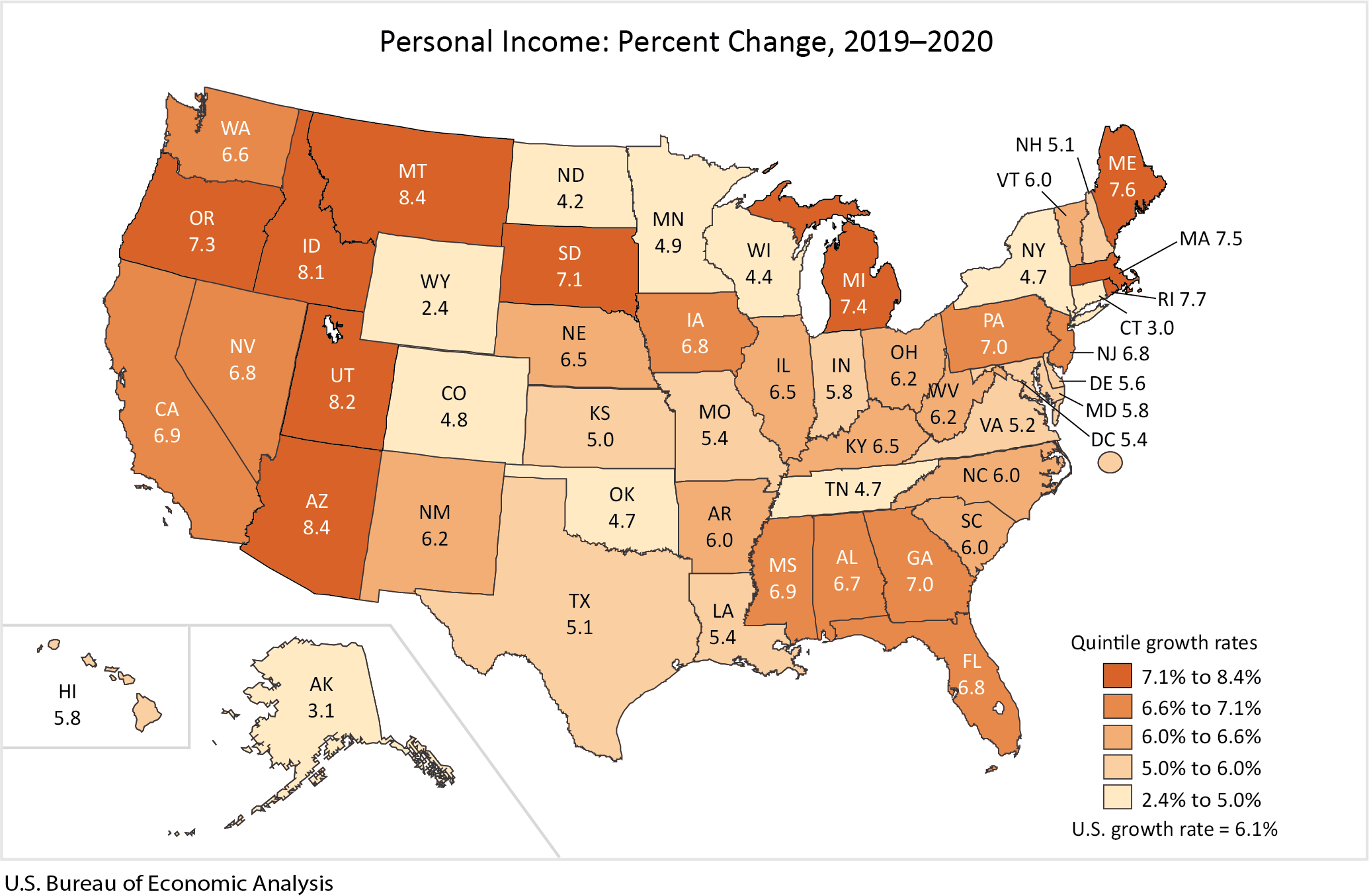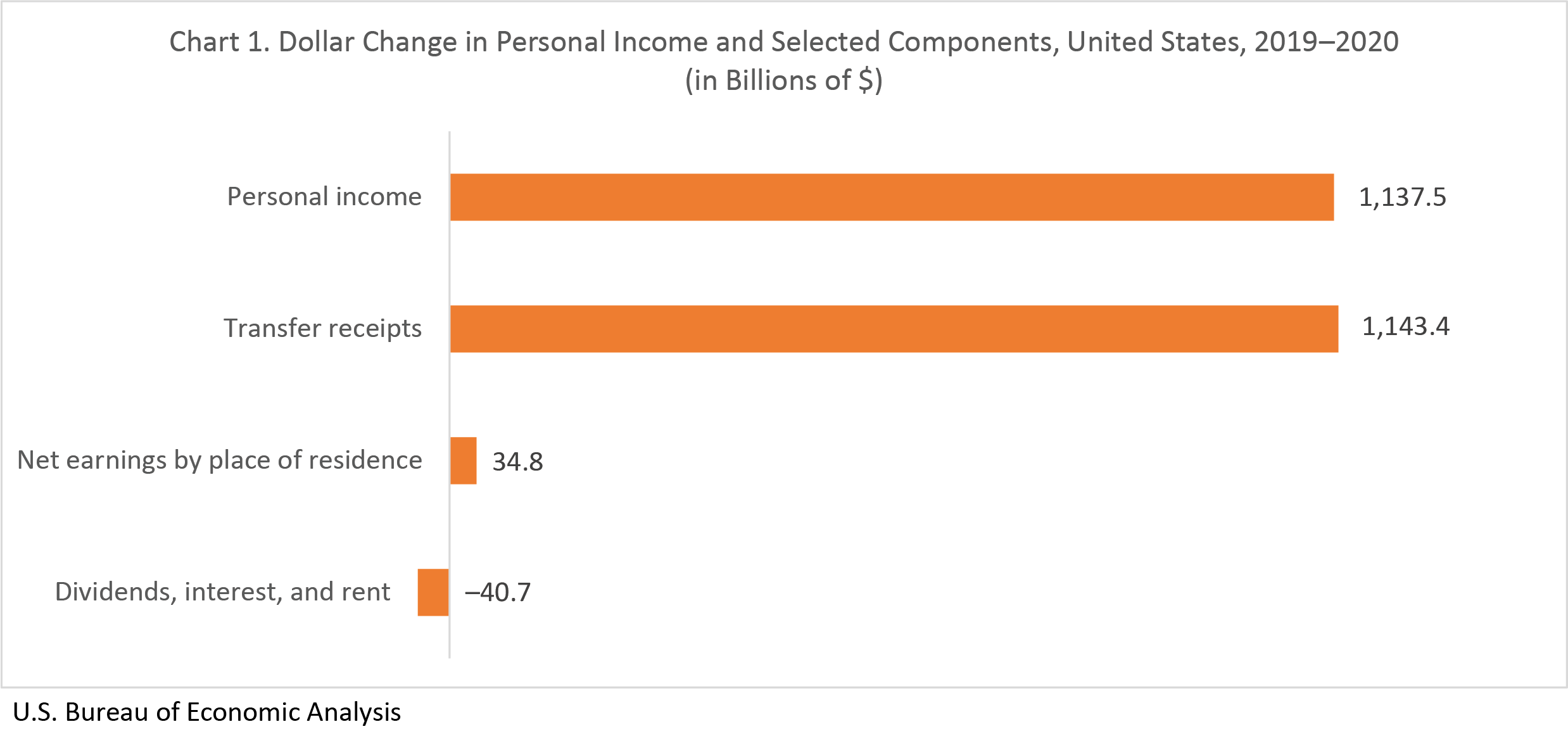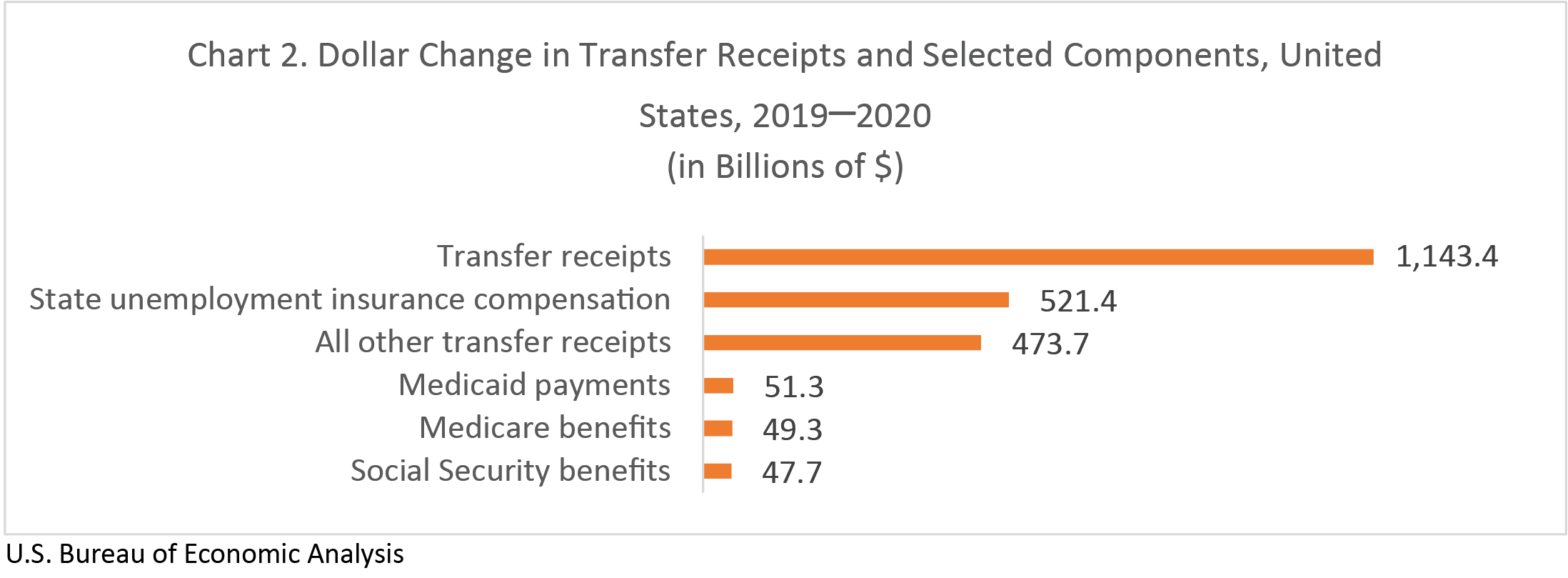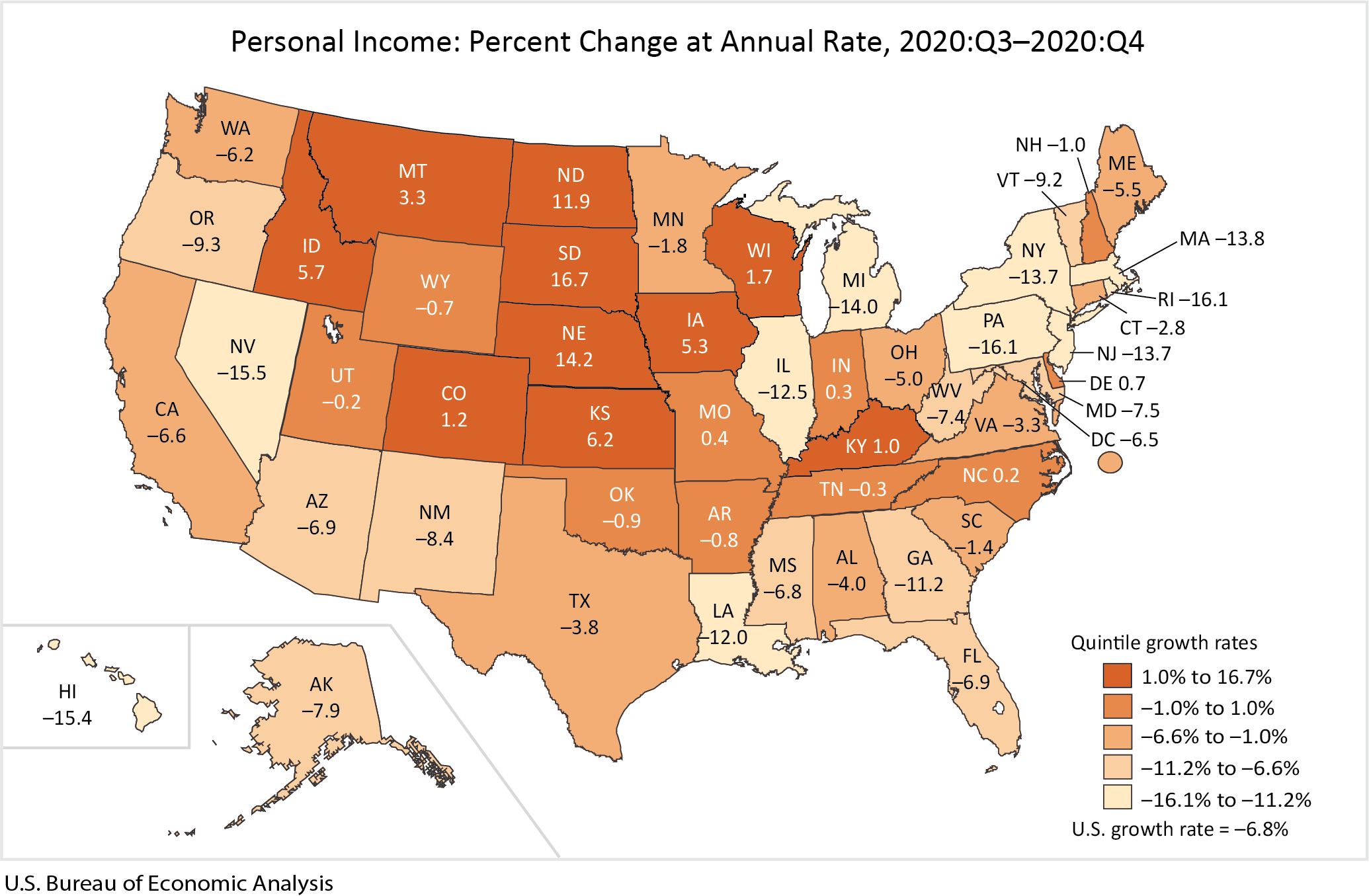News Release
State Annual Personal Income, 2020 (Preliminary) and State Quarterly Personal Income, 4th Quarter 2020
State personal income increased 6.1 percent in 2020 after increasing 3.9 percent in 2019, according to estimates released today by the Bureau of Economic Analysis (BEA) (table 1). In 2020, the increase in transfer receipts was the leading contributor to personal income growth in all states and the District of Columbia (table 2). The percent change in personal income across all states ranged from 8.4 percent in Arizona and Montana to 2.4 percent in Wyoming.
Transfer receipts increased 36.6 percent, accounting for the entire $1.1 trillion dollar increase in personal income for the nation in 2020 (chart 1). The increase in transfer receipts reflected new government relief payments provided by the Coronavirus Aid, Relief, and Economic Security (CARES) Act of 2020. Increases in earnings were more than offset by decreases in property income (dividends, interest, and rent).
Transfer receipts. The increase in transfer receipts primarily reflected increases in state unemployment insurance compensation and in all other transfer receipts (chart 2). Transfer receipts increased in all states and the District of Columbia, ranging from 64.2 percent in Hawaii to 23.9 percent in Arkansas (table 2).
State unemployment insurance compensation was boosted by a temporary $600 increase in weekly benefits provided by the CARES Act as well as an expansion of eligibility of workers not previously covered by state unemployment compensation programs. The increase in all other transfers primarily reflected the $1,200 economic impact payments to individuals.
Earnings. For the nation, earnings increased 0.3 percent in 2020 (table 2), the smallest increase since 2009. Earnings decreased in 10 of the 24 industries for which BEA prepares estimates (table 4). The largest decreases were in accommodation and food services and in arts, entertainment, and recreation. Earnings in 14 industries increased, with the largest increases in professional, scientific, and technical services and in finance and insurance. The percent change in earnings across all states ranged from 5.2 percent in Utah to –6.6 percent in Hawaii.
Property income. Property income decreased 1.1 percent for the nation in 2020 after increasing 1.3 percent in 2019. Property income decreased in all states and the District of Columbia, ranging from –0.4 percent in Hawaii, New Mexico, and West Virginia to –1.9 percent in South Dakota.
The 2020 estimates of state personal income were impacted by the response to the spread of COVID-19, as governments issued and lifted "stay-at-home" orders, and government pandemic assistance payments were distributed to households and businesses. The 2020 Q4 estimates of state personal income continue to be impacted by the response to the spread of COVID-19. Federal economic recovery payments slowed as pandemic-related assistance programs continued to wind down. The full economic effects of the COVID-19 pandemic cannot be quantified in the state personal income estimates because the impacts are generally embedded in source data and cannot be separately identified.
State Personal Income, Fourth Quarter 2020
State personal income decreased 6.8 percent at an annual rate in the fourth quarter of 2020 after decreasing 11.3 percent in the third quarter (table 5). Increases in earnings and property income were more than offset by decreases in transfer receipts. The percent change in personal income across all states ranged from 16.7 percent in South Dakota to –16.1 percent in Rhode Island and Pennsylvania (table 6).
Farm earnings were the leading contributor to increases in personal income in South Dakota and seven other fast-growing states including Nebraska, North Dakota, Kansas, Idaho, Iowa, Montana, and Wisconsin. The increase in farm earnings followed increases in payments to farmers from the Coronavirus Food Assistance Program provided by the CARES Act.
The decrease in transfer receipts in the fourth quarter of 2020 reflected a decrease in benefits from several other CARES Act programs including the expiration of the temporary $600 per week increase in state unemployment insurance compensation.
Today, BEA also released revised quarterly estimates of state personal income for the first quarter of 2020 through the third quarter of 2020. Updates were made to incorporate source data that are more complete and more detailed than previously available and to align the state estimates with revised national estimates. BEA also released revised quarterly estimates of population and per capita personal income for the first quarter of 2010 through the third quarter of 2020 and revised annual estimates of population and per capita personal income for 2010 through 2019.
Next release: June 22, 2021, at 8:30 A.M. EDT
Personal Income by State, 1st Quarter 2021



